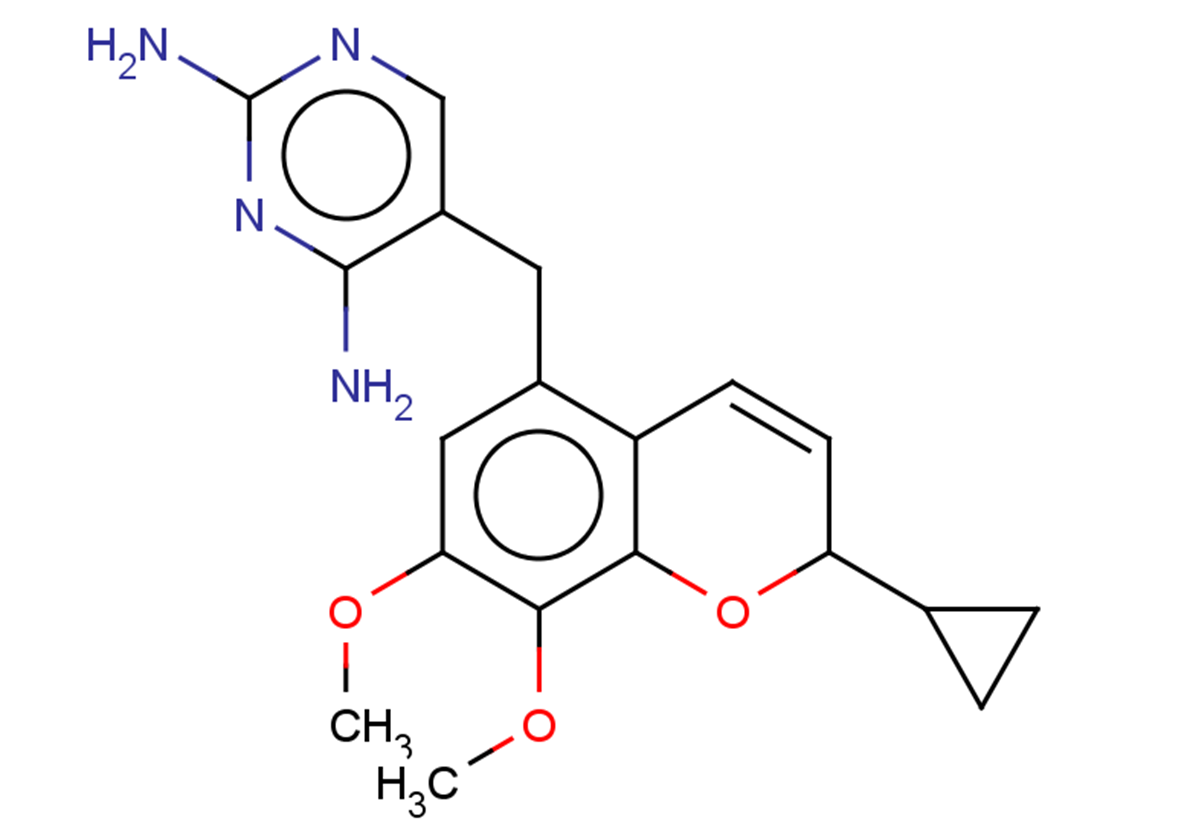
Iclaprim
CAS No. 192314-93-5
Iclaprim( AR-100 )
Catalog No. M23874 CAS No. 192314-93-5
Iclaprim is a novel specific bacterial Dihydrofolate inhibitor.
Purity : >98% (HPLC)
 COA
COA
 Datasheet
Datasheet
 HNMR
HNMR
 HPLC
HPLC
 MSDS
MSDS
 Handing Instructions
Handing Instructions
| Size | Price / USD | Stock | Quantity |
| 5MG | 402 | In Stock |


|
| 10MG | 593 | In Stock |


|
| 25MG | 888 | In Stock |


|
| 50MG | 1251 | In Stock |


|
| 100MG | 1692 | In Stock |


|
| 200MG | Get Quote | In Stock |


|
| 500MG | Get Quote | In Stock |


|
| 1G | Get Quote | In Stock |


|
Biological Information
-
Product NameIclaprim
-
NoteResearch use only, not for human use.
-
Brief DescriptionIclaprim is a novel specific bacterial Dihydrofolate inhibitor.
-
DescriptionIclaprim is a novel specific bacterial Dihydrofolate inhibitor. It can inhibit the growth of S. aureus (MIC90: 0.06 μg/mL).(In Vitro):Iclaprim inhibits the growth of S. aureus (MRSA) with an MIC90 of 0.06 μg/mL.
-
In VitroIclaprim inhibits the growth of S. aureus (MRSA) with an MIC90 of 0.06 μg/mL.
-
In Vivo——
-
SynonymsAR-100
-
PathwayGPCR/G Protein
-
TargetAntibacterial
-
RecptorAntibacterial|Bacterial
-
Research Area——
-
Indication——
Chemical Information
-
CAS Number192314-93-5
-
Formula Weight354.4
-
Molecular FormulaC19H22N4O3
-
Purity>98% (HPLC)
-
SolubilityDMSO:28 mg/mL (79 mM; Need ultrasonic and warming)
-
SMILESCOc1cc(Cc2c(N)nc(N)nc2)c(C=CC(C2CC2)O2)c2c1OC
-
Chemical Name——
Shipping & Storage Information
-
Storage(-20℃)
-
ShippingWith Ice Pack
-
Stability≥ 2 years
Reference
1.Schneider P, et al. Iclaprim, a novel diaminopyrimidine with potent activity on trimethoprim sensitive and resistant bacteria. Bioorg Med Chem Lett. 2003 Dec 1;13(23):4217-21.
molnova catalog



related products
-
(Rac)-AMXT-1501 4HCl
(Rac)-AMXT-1501 4HCl is a polyamine transport inhibitor that inhibits polyamine transport and acts synergistically with cisplatin in HNSCC.
-
Tizoxanide
Tizoxanide is the main metabolite of nitazoxanide, which is a synthetic nitrothiazolyl-salicylamide derivative and an antiprotozoal agent.
-
Nisin
Nisin A is an antibacterial peptide. It is produced by the lactic acid bacterium L. lactis using uncommon amino acids, including lanthionine, and is a member of the class of antibiotics referred to as lantibiotics.



 Cart
Cart
 sales@molnova.com
sales@molnova.com


